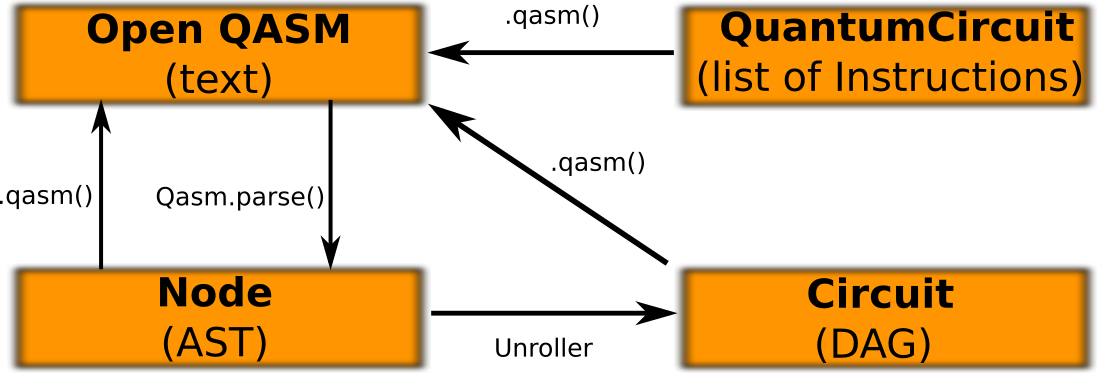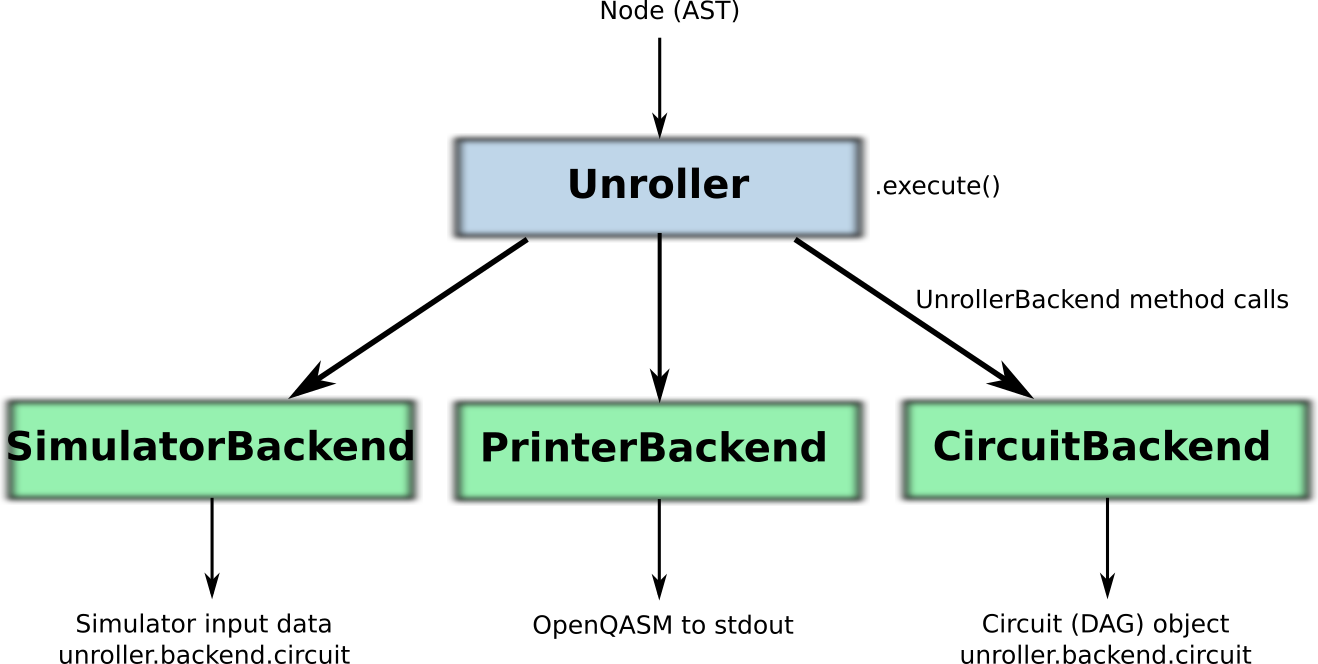Python software development kit (SDK) and Jupyter notebooks for working with OpenQASM and the IBM Q experience (QX).
The basic concept of our quantum program is an array of quantum circuits. The program workflow consists of three stages: Build, Compile, and Run. Build allows you to make different quantum circuits that represent the problem you are solving; Compile allows you to rewrite them to run on different backends (simulators/real chips of different quantum volumes, sizes, fidelity, etc); and Run launches the jobs. After the jobs have been run, the data is collected. There are methods for putting this data together, depending on the program. This either gives you the answer you wanted or allows you to make a better program for the next instance.
The tutorial directory contains Jupyter notebooks demonstrating components of the SDK. Take a look at the index to get started. The SDK uses the Python API to interact with the QX and expresses quantum circuits using OpenQASM. Python example programs can be found in the examples directory, and test scripts are located in test. The qiskit directory is the main module of the SDK.
The qiskit directory is the main Python module and contains the programming interface objects QuantumProgram, QuantumRegister, ClassicalRegister, and QuantumCircuit.
At the highest level, users construct a QuantumProgram to create, modify, compile, and execute a collection of quantum circuits. Each QuantumCircuit has a set of data registers, each of type QuantumRegister or ClassicalRegister. Methods of these objects are used to apply instructions that define the circuit. The QuantumCircuit can then generate OpenQASM code that can flow through other components in the qiskit directory.
The extensions directory extends quantum circuits as needed to support other gate sets and algorithms. Currently there is a standard extension defining some typical quantum gates.
The directory also contains internal modules that are still under development:
- a qasm module for parsing OpenQASM circuits
- an unroll module to interpret and "unroll" OpenQASM to a target gate basis (expanding gate subroutines and loops as needed)
- a circuit module for working with circuits as graphs
- a mapper module for mapping all-to-all circuits to run on devices with fixed couplings
Quantum circuits flow through the components as follows. The programming interface is used to generate OpenQASM circuits. OpenQASM source, as a file or string, is passed into a Qasm object, whose parse method produces an abstract syntax tree (AST). The AST is passed to an Unroller that is attached to an UnrollerBackend. There is a PrinterBackend for outputting text, a SimulatorBackend for outputting simulator input data for the local simulators, and a CircuitBackend for constructing Circuit objects. The Circuit object represents an "unrolled" OpenQASM circuit as a directed acyclic graph (DAG). The Circuit provides methods for representing, transforming, and computing properties of a circuit and outputting the results again as OpenQASM. The whole flow is used by the mapper module to rewrite a circuit to execute on a device with fixed couplings given by a CouplingGraph.
The four circuit representations and how they are currently transformed into each other are summarized in this figure:
Several unroller backends and their outputs are summarized here:
- Install Anaconda: https://www.continuum.io/downloads
- Clone the repo:
git clone https://github.com/IBM/qiskit-sdk-py
cd qiskit-sdk-py- Create the environment with the dependencies:
make env- Set up the Jupyter notebook. Add your API token to the file "Qconfig.py" (get it from IBM Q experience > Account):
cp tutorial/Qconfig.py.default Qconfig.py- Run it:
make runIf you upgrade the dependencies and get an error, try this fix:
pip install --upgrade IBMQuantumExperience
* Cannot remove entries from nonexistent file [PATH]/easy-install.pth
# Fix
curl https://bootstrap.pypa.io/ez_setup.py -o - | pythonPlease use GitHub pull requests to send contributions.
We use Pylint and PEP 8 style guide.
make env-dev- Please run this to be sure your code fits with the style guide and the tests keep passing:
make testNote: You can get your "putYourQExperienceTokenHere" from IBM Q experience > Account)
- Commit messages should have a one-line subject, followed by one line of white space, followed by one or more descriptive paragraphs, each separated by one line of white space, and all of them ending with a dot.
- If it fixes an issue, it should include a reference to the issue ID in the first line of the commit.
- It should provide enough information for a reviewer to understand the changes and their relation to the rest of the code.
The first release of QISKit was developed by Jim Challenger, Andrew Cross, Ismael Faro, Jay Gambetta, Jesus Perez, and John Smolin.
In future releases, anyone who contributes code to this project can include their name here.
QISKit is released under the Apache 2 license.
😎 If you'd like to contribute please take a look to our contribution guidelines.

